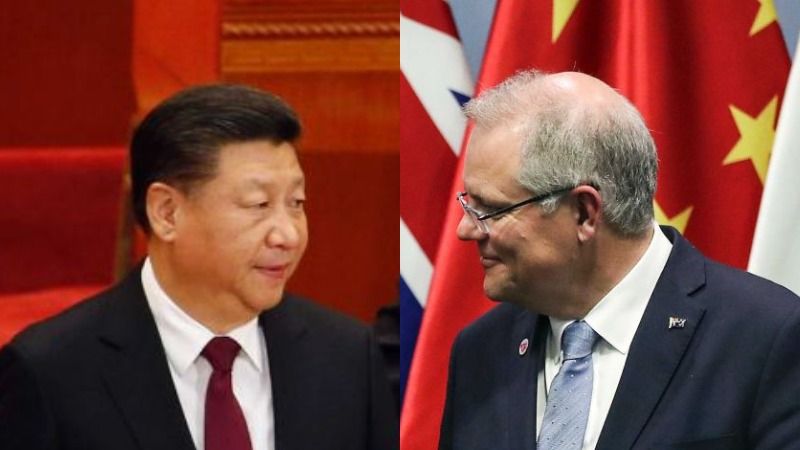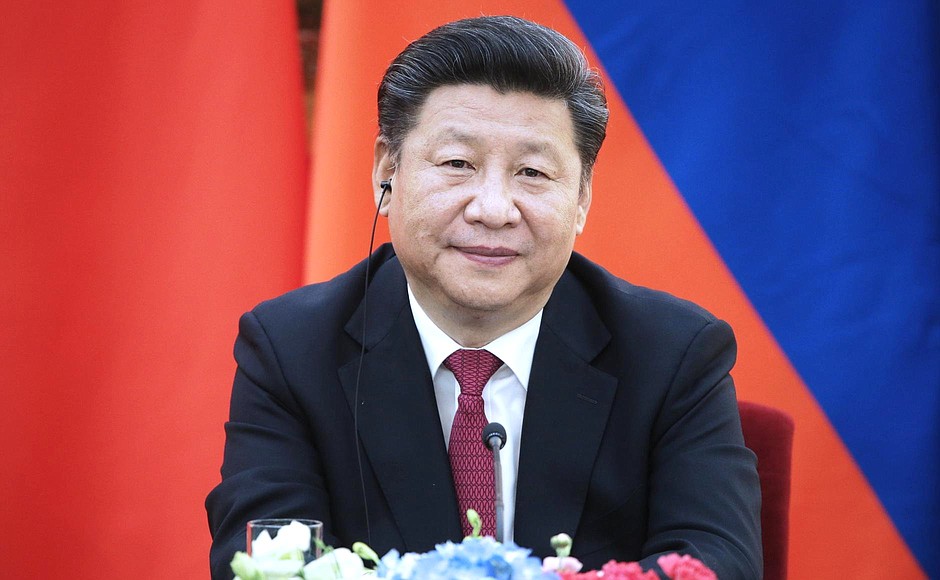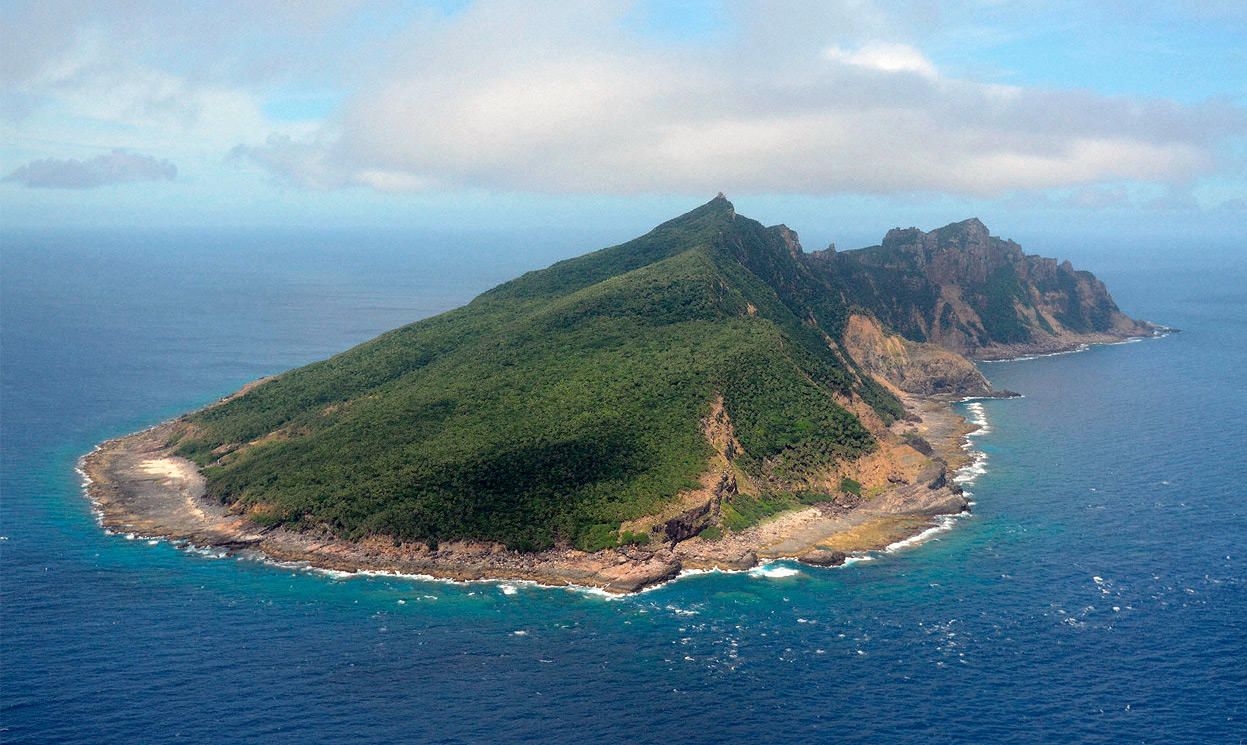
With the ‘Made in China 2025’ proposal, China is hoping to generate an innovative boost in its manufacturing industry with the aim to promote quality home-built products to the world. Originally introduced in 2015, Made in China 2025 is giving China 10 years to redress its IT and technology industry and implement innovative programs to develop its knowledge and industry accordingly. The goals are to increase the domestic and international content of core materials in high-tech to 40% by 2020 and then a whopping 70% by 2025. Opinions are still divided as to the feasibility of Made in China 2025, especially as foreign content represents more than half of all high-tech goods. At the moment, it doesn’t seem that China will be able to meet its goals. But the Chinese government is creating innovation centers to support its industrial development and approach the production of high-end equipment. Smart manufacturing, cloud computing, smart equipment that works almost without human interactions and the pursuit of innovative technologies are being encouraged throughout the country as a way to tackle the domestic deficit in high-tech production. Could China become a leader in the innovative and skilled industries?
China, formerly known as the kingdom of cheap unskilled labor
It’s difficult not to associate China with cheap products, and consequently inexpensive and unskilled labor. In the fashion industry, made in China may not always be synonymous with quality, but it certainly means that you get a damn cheap frock and sometimes that’s just what you want. The only way that bigger brands have found to tackle the competitive challenge of cheap labor is to promote quality, fair wages and innovative fashion technology to justify the price of their products. However, customers who research a bargain still turn to Chinese products. With its reputation for being the largest cheap labor factory in the world, China’s cheap products from unskilled labor are hard to beat if you’re price-conscious. With low wages and high productivity, China holds the place of an advanced capitalist – if not despotic – economy in the world market.
In other words, China has a major labor reorganization to address to become a competitive and innovative economy. Domestic skills don’t come for free.
China is changing its stance about skilled labor and innovation
It’s because they understand the importance of moving from an economy that relies primarily on unskilled labor to an economy that is built on the innovation of educated labor, that the Chinese government is trying to improve vocational education. It comes as no surprise that China has been struggling with a shortage of skilled labor for several years as a five-year plan for the increase of training and recruitment of highly skilled workers by improving the competitiveness of vocational schools. With the government’s support, this five-year plan is also trying to address the Chinese mindset that has been trained to reject education in favor of cheap labor, aka the guarantee of immediate wage as opposed to the prospect of studying first and earning later. With almost 98% of employment rate for skilled workers, it’s easy to see the value of educated vs. unskilled labor. However, vocational studies delay the entry to the professional world and make it more difficult for the Chinese population to cope with everyday costs.
Nevertheless, those who are educated, are already driving an innovative spike through the Chinese manufacture industries.
World’s largest solar power plant
China’s province Anhui holds the world’s largest floating solar power plants, built on top of a flooded coal mining area. In fact, the floating solar power plant combined with the Longyangxia Dam Solar Park, a 10-square-mile land-based plant that is said to be the largest on the planet, has generated an increase of 80% of China’s solar power output at the beginning of 2017. From January to March 2017, the overall solar power generation reached 21.4 billion kilowatt-hours more than the previous year. For comparison purposes, a town of 1 million inhabitants needs 10 million kWh a year, so the increase only is enough to supply a small country. More surprisingly, the whopping boost in solar power comes as several solar plants have been standing idle because of issues with congested transmission infrastructure. At a time where renewables are becoming hugely precious, it’s easy to measure the Chinese competitiveness on the energy market.
Fast and effective 3D printing sector
One 3D printing manufacturer embraced the need for environmentally-friendly structures and policies and decided to perfect a new printing system that will change the Chinese take on poverty. WinSun Decoration Design Engineering Co built in a day a village of 10 houses using a customized 3D printed to print concrete parts out of recycled waste. The test village was built in Shanghai, using a hefty printer – 150 meter long, 10 meter wide and 6 meter deep – to print concrete constituents, and cement reinforced with glass fiber. Naturally, the houses didn’t pop out all assembled. The printer was set on creating separate parts that were then transported and assembled by people. This amazing experience could present a new possibility for the Chinese government to bring safe and hygienic houses in poverty-stricken regions of China. As this gigantic project progresses the need for high-quality 3D software and reliable 3D printer motors by domestic manufacturers – Moons is one of those high-end tech manufacturers that provide the relevant motorized parts for 3D printers – will increase. In a challenge at human scale, China has proven that innovation for the people is the best kind of innovation. Market competitiveness and economic power have been rejected for the sake of the less privileged part of the Chinese population.
The infamous transit elevated bus
It’s difficult to talk about Chinese innovation without mentioning the elevated bus that has kept the world in suspense. The bus that was designed to drive over the top of cars and that was planned to for testing over a 300 meters track along a roadway was unfortunately ruled out as a scam by the Chinese authorities. At first, it was financial difficulties followed by strange setbacks. But the Beijing police recently announced that they’re trying to recover the funds for each investor. While this sounds like an innovative failure, the transit elevated bus suggests a practical and creative solution to traffic problems. It’s likely that we’ll hear about it again in future, from a serious high-tech firm that wants to make a difference.
Communication with space
The Quantum Experiments at Space Scape is a research project in quantum physic. Based in China, the project is of international importance and has recently proven the ability to communicate from space using quantum photons. In what can only be described as a big leap for science, China’s quantum satellite has successfully distributed entangled photons between different base stations on Earth – with as much as 1,200 kilometers between them on the ground. While in theory entangled photons can remain linked across the distance, this has never been possible across such vast distances, and even less between the Earth and space. Whether this will allow us, in longer terms, to communicate more effectively with the space around the Earth or to reach so far unknown extraterrestrial civilizations is unknown. But it makes no doubt that this small step for the entangled photons is a giant step for science!
Made in China 2025 is a big claim. But the constant innovation that is changing the Chinese industries offers the possibility that maybe in the near future the world could rely on China for our renewable energy, 3D print technology, transport solutions and spatial explorations. Think big, or 不撒大网不得大鱼, as they say in China (bu sa da wang bu de da yu): Without casting a big net, you can’t catch a big fish.
China
Nepal Hindu Rashtra: Time to Wrap Up Communism?

Nepal abolished the Constitutional Monarchy in May 2008 and declared itself as a Federal Democratic Republic. There was a new hope in Nepal as it was becoming world’s newest democracy even though it had dissolved the Hindu Rashtra. However, the democracy in Nepal immediately got into the tight grips of leftists and communists backed by China. It has been almost 12 years since monarchy was abolished in Nepal. Interestingly, the Himalayan country has already seen 11 Prime Ministers in this period. Thus, leaving the Nepalese people still yearning for good and stable governance.
Re-establish Hindu Rashtra
As the political instability is growing in Nepal, people are demonstrating concerns about the future of the country. In fact, Nepalese citizens are unhappy with frequent interference by China and India influencing its unstable communist regime. More voices are now growing in support of reinstating the Monarchy and declaring Nepal as world’s only Hindu Rashtra (which by default offers full religious freedom to other religious minorities as per Hindutva concept of Sarva Dharma Sama Bhava – all paths lead to one).
Former Deputy Prime Minister of Nepal, Kamal Thapa said that if political parties do not recognize the seriousness of reinstating the monarchy, then the country will head for a period of darkness. “Recently, we’ve had high-ranking officials from India and China come to Nepal to try and solve problems within the ruling party,” he said. “We cannot let others dictate what we want to do.”
Communist Party All Set to Suppress Protests, By Force
Kamal Thapa has firmly demanded an all party meet to discuss reinstating of monarchy. Throughout the month of December, 2020 Nepal has seen anti communism protests across the country in support of reinstating the monarchy and Hindu Rashtra. Most importantly, the demand has become a nationwide mass people’s movement. So much so that the communist regime had to send a directive to 77 districts in 7 provinces. The directive suggests suppressing the protests by force. Nevertheless, Rashtriya Prajatantra Party and other royalist groups have ignored this threat from the communist regime. Protester groups have pledged to strengthen the protest in the coming weeks.
Nepal: Demonstration held in capital Kathmandu, demanding restoration of monarchy in the country. pic.twitter.com/TFjmKu9U9Z
— ANI (@ANI) December 5, 2020
Role of China – Hope for Communism in Nepal
China’s ambassador to Nepal is known to have very close relationship with Nepalese Communist regime. In fact, She has been super effective in tilting Nepal’s posture towards its ideological partner, China. One of her greatest achievements in 2020 was artificially manufacturing a border conflict between Nepal and India. Consequently, souring relations between the two Hindu majority nations. In addition, she managed to silence Nepal’s communist government after China took one of Nepal’s border villages under its control. However, recent political turmoil in Nepal and a renewed demand for reinstating of Hindu Monarchy is showing that the situation is now out of Chinese hands
Role of India
Year 2020, was not a good year for India and Nepal relations. India was busy in controlling domestic Covid cases. On the other hand, China had launched an invasive campaign into Indian territory. In addition, India is always busy with Pakistan on its western borders. However, the surprise came to India when China was almost successful in creating a new border tension between India and Nepal.
Those who do not know about Indian government should note that the current ruling party in India finds itself ideologically opposite to communism. This further creates differences between the two countries.
Communist party in Nepal has blamed India for supporting the ongoing anti communism protests in Nepal. However, former advisor to Nepal’s PM has suggested there is no proof that India is fueling pro Monarchy, anti communism demand in Nepal.
Nevertheless, There are certain influencers in India who have, in their personal capacity, expressed support for reinstating the Hindu monarchy. Yogi Adityanath, who is the Chief Minister of an Indian state bordering Nepal, said in 2015 that Nepal should declare itself a Hindu Monarchy. Readers should note that in 2015 Yogi Adityanath was not the Chief Minister yet. However, today he is not only popular in south of Nepal, his popularity is growing in Nepal as well.
Will The World See the first Hindu Rashtra?
It is difficult to answer this question at this moment. However, Nepalese communist government could not resolve the political instability and in December 2020 Nepalese government dissolved the parliament. Nepal will see next elections in April – May 2021. Hopefully, the world will see Nepal’s 12th Prime Minister in 13 years or may be a Hindu King? Royalists and protester groups have expressed confidence in winning next elections. We have our eyes on Nepal for updates.
China
Ridiculous Tariffs on Wines – China Australia Trade War Explicated

Earlier in November 2020, Communist China slapped Ridiculously high tariffs up to 212.1% on Australian wines. These tariffs were in the response of ongoing trade war between Communist Party of China and Australia. China is the biggest importer of Australian wines making up a whopping 39% of Australia’s total wine export. Australia has already raised concerns at a WTO meeting about China taking measures against its barley, wine, meat, dairy, live seafood, logs, timber, coal and cotton, according to a reuters report.
How did China – Australia trade war begin?
China and Australia shared one of the best times in their relationship after Kevin Rudd from the centre-left Labour party came to the power in Dec 2007. During his leadership Australia decided to pursue appease China policy which included steps such as:
- Chastising Taiwan for its renewed push for independence and reiterating support for a one-China policy in favor of People’s Republic of China. (Source: The Age)
- Signing a A$50 billion deal with PetroChina in 2009 (largest contract ever signed between the two countries) that ensures China a steady supply of LPG fuel until 2029.
- Unilaterally announcing departure from Quadrilateral Security Dialogue to appease China.
Nosediving of China – Australia Relationship
The course of this partnership changed when Julia Gillard from the centre-left Labour Party took over the leadership and initiated closer partnership with United States. This included revival of interest in Joining Quadrilateral Security Dialogue and stationing of US troops near Darwin, Australia.
In 2013, Tony Abbott from centre-right Liberal Party took over the leadership. During his term Australia saw some confusion in its China Policy. His Defence Minister Senator David Johnston told in a statement that Australia is seeking to balance their relationship between China and the United States. It was during his term when Australia and China established a Free Trade Agreement.
However, the relationship between Australia and China took a downturn in 2015 when Malcolm Bligh Turnbull from the centre-right Liberal Party came into power. This is the point in history which has led to current trade war situation between Australia and China.
- Australia became the strongest opponent of China’s territorial claim in South China Sea.
- Banned foreign donations to Australian political parties and activist groups in a move to target Chinese interference in Australian democracy.
- Revived Quadrilateral Security Dialogue with United States (Donald Trump), India (Narendra Modi) and Japan (Shinzo Abe). This was the time when Quadrilateral Security Dialogue saw hope of becoming something bigger as all four countries had centre-right governments who had a clear China Policy.
2019 Onwards: China – Australia Trade War
In 2019, relationship between the two countries further took a dip with Scott Morison from centre-right Liberal party becoming the Prime Minister. During his leadership:
- Australia signed a letter condemning China’s mistreatment of Uyghurs and other minorities.
- Suggested investigating the cause of Covid 19 in April 2020, which resulted into an angry response from China threatening to reduce Tourism and Trade.
- Opposed the Hong Kong National Security Law in June 2020.
- Reiterated its support for ethnic minorities in China and freedom in Hong Kong in October 2020
- Demanded a formal apology from China for posting a fake image of an Australian soldier holding a bloodied knife against the throat of an Afghan child
In conclusion, these continuous attack on China made China so angry that they deliberately leaked a list of 14 points suggesting why China is angry at Australia
China’s attempt at “buying” left wing politicians around the world
Recent trend is suggesting China’s attempt at “buying” influential left-wing politician around the world. In November, 2017 Australia’s Labour Party’s MP Sam Dastyari went against his own party on South China Sea. He later quit his party after he was found of taking financial favours from China.
In 2008, India’s Centre-left party – Indian National Congress signed a Memorandum of Understanding with Communist Party of China. Its contents are still hidden from the Government of India and the people of India.
Recent US Report has shown concern on President Elect Joe Biden not clearing doubts on his China policy.
How Can we Help Australia Post Ridiculous Tariffs on Australian Wines?
In 2020 China has directly or indirectly impacted many of our lives. Some of us have lost our jobs, some of us are taking a reduced salary. In fact, some of us are sitting at home instead of travelling; while some of us have lost our loved ones only because of communist party was incapable of controlling a virus outbreak.
As the entire world is struggling with this virus, Chinese economy continues to be on path of surpassing the US. Therefore, we should pledge to minimize buying Chinese products. It might be impossible to completely boycott Chinese products, but we can at least minimize it.
Install Cultivate Chrome Extension (non sponsored/affiliate link – We are not getting paid to post this). This plugin works on both Google Chrome and the new Microsoft Edge. It helps you understand the origin and seller location of a product on Amazon. It is a great tool to minimize your dependence on Chinese products. If you are lucky, this extension will also suggest some Made in USA alternatives
Buy Australian Wines – Australia desperately needs a new market for its wine and other products. This New Year and Christmas season, we should pledge to celebrate with at least one Australian wine!
China
What a Rising Xi Jinping Means for China and the World

Source: en.kremlin.ru
“Watch this man.” These were the three words used by the founding father of Singapore Lee Kuan Yew to describe a relatively unknown Xi Jinping while he was yet to become the President of the People’s Republic of China. Today, in addition to being China’s “paramount leader”, Xi is arguably the most powerful man in the world, and even if leaders across the world were doubtful about it till now, the developments in the previous week were sure to make them think again.
19th Party Congress: How it unfolded
Xi today, Xi forever?
The Communist Party of China assembled the previous week for its 19th Party Congress, a political summit that takes place every five years to decide upon the country’s future and the future is precisely what Xi has fixated his eyes upon. According to the current rules, Mr Xi must step down as the leader when his term ends in 2022 and as tradition dictates, a successor must be appointed. While only time will reveal whether Mr Xi steps down from the presidency at the end of his term, it increasingly looks that he is not keen to do so, having failed to hint towards any successor for the time being. His apparent intentions to stay put were further solidified with the appointment of the new members to the Politburo Standing Committee, the highest decision making authority in the country after the president. Each of the members appointed to the body is over 60 years of age, which means that they are highly likely to retire when their term comes to an end with the next meeting five years later. Interestingly, two-thirds of them are also known to be Mr Xi’s loyalists.
Xi Jinping Thought: A force to be reckoned with
“Xi Jinping Thought on Socialism with Chinese Characteristics for a New Era” or the “Xi Jinping Thought” for short was written into the party’s constitution at the end of the Congress. The thought consists of 14 principles calling for deep reforms, conserving the environment, the party’s complete control over the army, and the importance of the unification of the country. The development was highly publicised and with good reason. With the “Xi Jinping Thought” embedded in the constitution while still being in power, Xi Jinping has drawn comparisons from all over the world to Mao Zedong himself. Moreover, he has ensured that anyone that opposes him will do so at the cost of their removal from the party. When Xi asked the delegates at the end of his address for any objections, shouts of “meiyou” which means “none” rang through the Great Hall of the People.
Mr Xi has declared the start of a “new era” for China, and undoubtedly for the entire world. It is therefore important to ask what significance these developments hold for the country and for the world at large.
What this means for China
The inclusion of Xi’s thought in the constitution means that the same will be taught in schools, colleges, and other institutions throughout the country, infusing his ideology among the Chinese on a cultural level. Abraham Denmark, director of the Asia program at the Wilson Center puts it aptly when he says that the move “greatly increases, … broadens, and deepens Xi Jinping’s personal power within the Chinese system”.
The president has already found a wide support of the Chinese population with his push for modernisation and his crackdown on corruption has been hugely popular among the masses. Since his election in 2012, Mr Xi’s anti-corruption drive, famously known within the country as the “tiger and flies campaign” has either disciplined or expelled nearly a million party members. As his stance on corruption remains as stern as ever, many have come to view it as a political tool used by him time and again to get rid of political rivals. However, the corruption drive has undoubtedly proved to be effective and fruitful for the country’s business climate.
While Mr Xi’s crackdown on corruption has garnered immense coverage, the crackdown on humans rights activists and NGOs has not received its fair share. China has struggled for decades in its battle for free speech. In 2015, many human rights lawyers were detained and many international NGOs faced stricter curbs to keep them from functioning. As the president has left little room for any opposition within the party, the authoritarianism and censorship are by no means expected to be relaxed, ensuring that there is no opposition from outside the party as well.
Powerplay: China’s standing on the global stage
Donald Trump was among the world leaders who wished the Chinese president when he congratulated him on his “extraordinary elevation”. The reverence he holds for Mr Xi was quite apparent when he said: “some people might call him the king of China.” The surprise, however, came when North Korea’s Kim Jong Un congratulated the president on his “great success” since the two leaders are not known to be fond of each other. The intent here is clear. Both sides need a China that is continuously growing in power on their side in their stand against each other, and that means a closer association with Mr Xi. Chinese influence in the world is unlikely to stop there.
While speaking to CNN, James McGregor, author of “No Ancient Wisdom, No Followers: The Challenges of Chinese Authoritarian Capitalism”, mentioned that “given the chaos in Washington and also the dysfunction in Europe, the world is looking for leadership.” Mr Xi enjoys a great level of stability and largely unquestioned authority in a time where the leaders of Western democracies face intense competition at home. As such, his message to his party and to the world is clear: in the coming decades, China will “stand proudly among the nations of the world” and “become a leading global power. ” However, it will do so on its own terms, emphatically rejecting the Western political models.
These intentions are perhaps best evidenced by The Belt and Road initiative, China’s attempt at connecting Europe, Asia, and Africa with each other through a modern take on the Silk Route, into which it has already pumped hundreds of billions as loans and aid to countries across all three continents. While the project has been met with opposition from Japan, India, and the USA, many of China’s neighbours have expressed their support for it, which speaks of its influence on the global stage.
With the people’s army under the control of the party, Mr Xi also looks to achieve the twin goals of increasing the military might and the protection of China’s sovereignty. “We will not tolerate anyone, using any means, at any time to separate one inch of land from China”, he said in his address which is seen as a warning to both Hong Kong and Taiwan. Enhancing combat capability is also linked to the Chinese interests in the South China Sea, where its activities of building and militarisation of islands have received backlash from the international community.
“If one is big”, Mr Xi said on the final day of the Congress, “one must act big.” There’s no doubt that Mr Xi intends to put these words into action at the global level. Lee Kuan Yew once rightly pointed out about China that the world would do well to remember: “The size of China’s displacement of the world balance is such that the world must find a new balance. It is not possible to pretend that this is just another big player. This is the biggest player in the history of the world.”
References:
http://www.cbc.ca/news/world/china-congress-xi-jinping-petricic-1.4371251
https://www.theatlantic.com/international/archive/2017/10/china-xi/544035/
-

 Business12 months ago
Business12 months agoHow To Future-Proof Your Business With The Right Tools
-

 Travel10 months ago
Travel10 months agoTravelling from San Antonio to Guadalajara
-

 Travel7 months ago
Travel7 months agoTravel wellness tips for a healthier and more enjoyable journey
-

 Europe5 months ago
Europe5 months agoRecent Books by Boaventura de Sousa Santos: Law, Colonialism, and the Future of Europe









